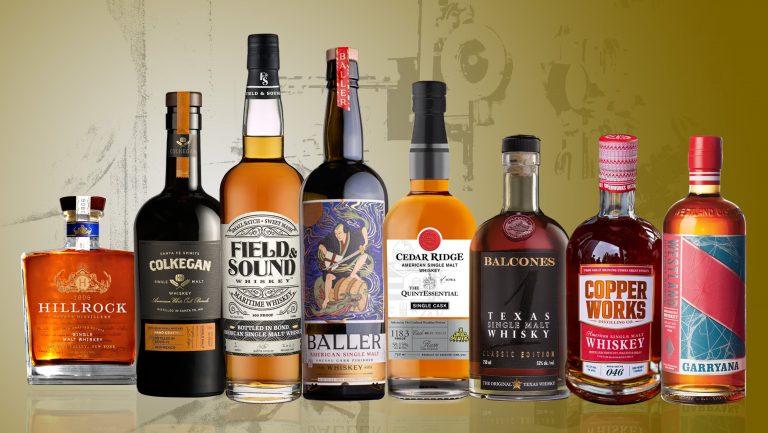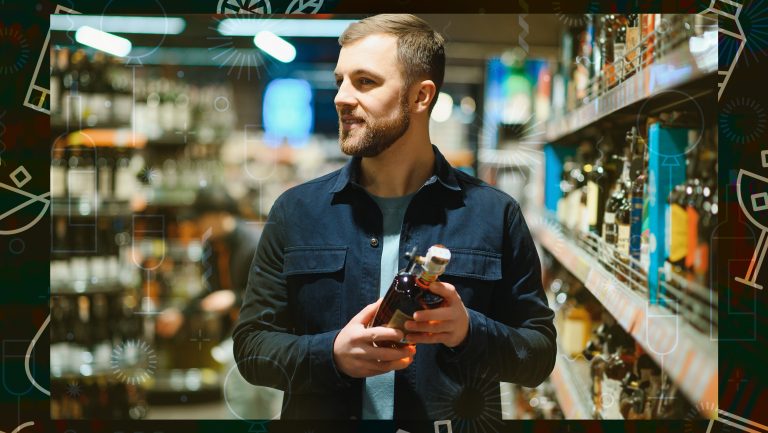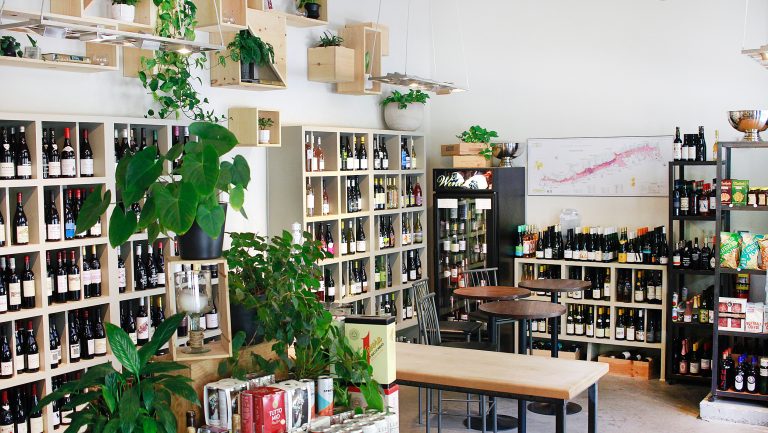You can’t really tell the story about Hi-Time Wine Cellars, California’s biggest, oldest, and arguably most eclectic wine and spirits store, without talking about the Logo:
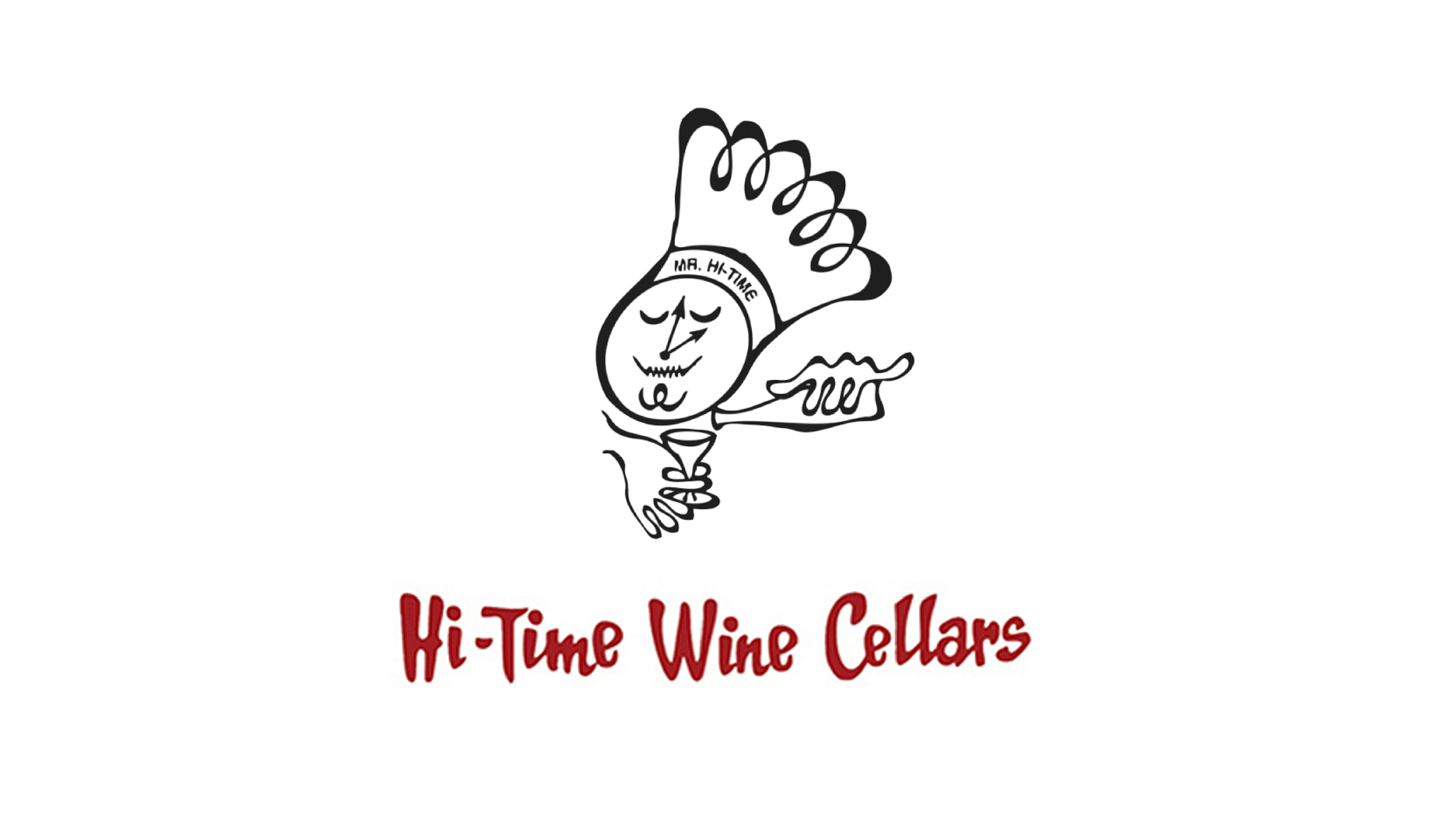
For most of its 60 years, this iconic Costa Mesa wine shop has been personified by Mr. Hi-Time. He is an odd sight—heavy-lidded, squiggle-lipped, cleft-chinned. On his head sits a baroque chef’s toque, and his face is festooned with clock hands, set, in perpetuity, at one o’clock. He is pouring wine into a modest coupe, and something about his expression suggests, to me at least, that this is not the first bottle he’s opened today.
He’s offbeat, anachronistic, quirky—like a doodle who’s leapt from a Jules Feiffer dream cartoon and is calmly contemplating a path of debauchery for the rest of his day.

Don’t miss the latest drinks industry news and insights. Sign up for our award-winning newsletters and get insider intel, resources, and trends delivered to your inbox every week.
Hi-Time is 60 years old this year. This Orange County, California, shop has grown from almost nothing, a storefront where surfers picked up six-packs and smokes after their sessions, to one of the largest wine shops in California. It’s tempting, when asked where its strengths are, to say, “Everything.” But to say so wouldn’t be terribly off the mark. After all, with $28 million in annual sales, there’s evidence that that’s true. Hi-Time is emphatically a family business, and it’s quirky like one, even as it’s become one of the most important wine shops in Southern California.
Hi-Time Wine Cellars was founded in 1957 by the Hanson brothers—Chuck, Fritz, and Harold (and a late in-law, Jim McVay). It’s still run by them and their kin: Fritz’s daughter Diana, serves as general manager, the position Harold held for many years; Fritz’s son Keith is the chief spirits buyer; and nieces, nephews, sons, and daughters are spread throughout a loyal staff, many of whose tenures are measured in decades.
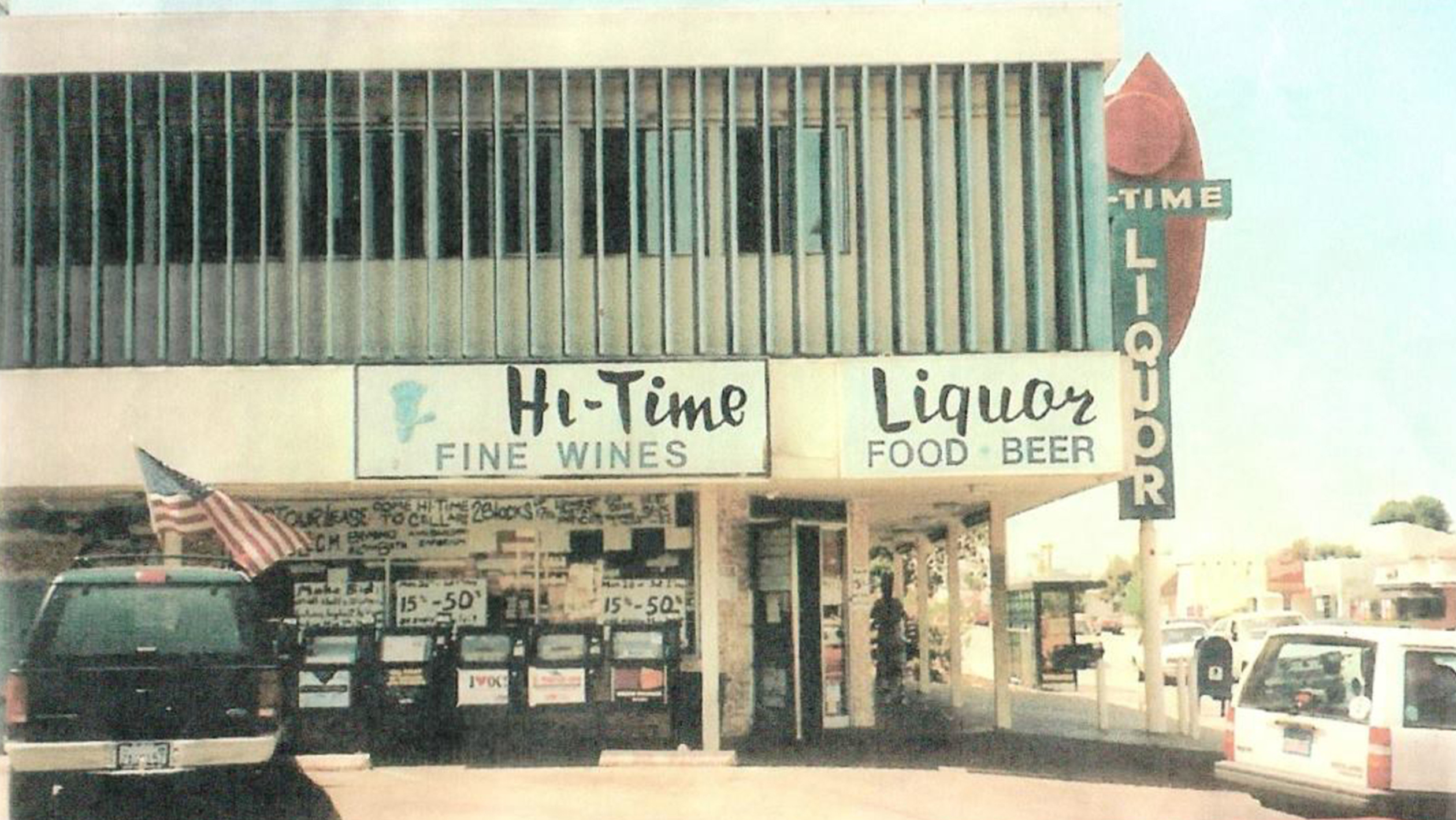
In all, nine members of the Hanson family work at the store, including Chuck, at age 87, who still comes in twice a week to oversee some wine-buying decisions, especially among old-guard California producers, whom he counts as old friends. Over the years the business and the building have grown, like a hive, expanding when needed with sections, floors, warrens, and shipping bays, until today the complex inhabits 22,000 square feet on a quiet Costa Mesa street not far from the beach.
Hi-Time calls itself a wine cellar, and in fact there is a cellar, belowground (inspired by Harold’s tours of Burgundy cellars during his military service in France). But the sheer number of items sold here that aren’t wine is staggering: bread, cheese, cured meats, hams, drinks, and juices; imported cigarettes and cigars, cigar cutters, humidors, tobacco pouches, ashtrays (especially all things cigar—it has one of the largest walk-in cigar storage rooms in the state), as well as pipes, lighters, and other tobacco accoutrements; gift cards, gift bags, wine keys, snifters, flutes, highballs, lowballs, steins, crystal glasses, decanters, champagne sabers, and Laguiole knives; and cork pulls, crumbers, jiggers, muddlers, flasks, zesters, squeezers, stoppers, tap handles, beer-pong tables, silicone ice trays, wine racks, and gift baskets in every imaginable size, shape, and degree of extravagance.
Then there is the spirits section of the shop, with whole aisles given to every imaginable iteration of booze, whether brown spirits or clear, from rotgut to top shelf, from the cheesy (tequila in Tommy Guns) to the serious (50-year-old Scotches, old Cognac in crystal, and Pappy Van Winkle—all housed in locked cabinets).
An entire temperature-controlled walk-in cooler is devoted to beer, ale, cider, and the like, some 2,000 SKUs strong; kegs and special formats have their own cool room. There is an enormous shipping and receiving bay, which also serves as a drop-off and pick-up point for DRIZLY, a national app-driven wine and spirits delivery service for which Hi-Time provides fulfillment for the state and parts of the rest of the country.
There’s a wine bar flanked by 16 wines in a Cruvinet dispensing system, with a toy train running on an elevated track above your head—its origins can’t be satisfactorily accounted for by anyone.
The cellar itself is composed of recessed wooden racks on multiple levels, and is cool, quiet, dimly lit, enormous, and strong in every major region and several minor ones. Perhaps because of brother Harold’s tour of duty, Hi-Time has always had an exceptional selection of French wines, including and especially Champagne, Bordeaux, the Rhône Valley, and Burgundy, from which you can choose classics like Chassagne from Dugat-Py and Bouchard’s Baby Jesus to bottles from more cutting-edge producers, like Patrick Piuze’s Chablis and Sylvain Pataille’s graceful Marsannays.
Hi-Time, in short, is the furthest thing from a typical wine shop, which reinforces the notion that you’ve found yourself in a family-run business. By which I mean that the decision making that went into selling each of these items is not borne of marketing studies or an analysis of trends. Rather, it’s clear that these facets of the Hi-Time experience exist because of some staff member’s ignited passions, to which the Hansons responded, as they have invariably done, “Why not?”
It implies that the staff has devoted years, decades, to creating markets for the entire community, aided by the fact that this is a part of California with a lot of disposable income and a sense of taste in need of cultivation—ideal conditions, it turns out, for the development and nurturing of a collector culture, which Hi-Time has systematically fostered over the years. Sometimes, the business comes to them. When a neighbor and local native like John Wayne expresses an interest in exploring tequila and mezcal, you do what you can to facilitate that.
But when it comes to wine, the store’s tenure spans a golden era. The Hansons’ business has grown side by side with the California wine industry; they’ve known and ridden along with the icons of California winemaking—indeed, of those of much of the world—for all of their professional lives.
That symbiosis is something they’ve been able to pass on to their customers, such that when winemakers like Paul Hobbs, or Patrick Piuze, or going back a few years, Robert Mondavi, make a market visit, the Hansons make sure their customers get to meet them, whether in the store or through a meal they’ve organized, either at restaurants or at private dinners. “We’d go out to collectors in Corona del Mar and Newport Beach,” says Chuck Hanson, “and if people wanted to have a tasting, we’d have it in their homes and they could invite their friends.”
But Chuck Hanson doesn’t believe in limiting the wine experience to connoisseurship, a dictum that justifies his stocking a gamut of the wine universe, so that Crane Lake Merlot and DRC La Tâche coexist under the same roof.
“We still sell the San Antonio jug wines,” says Hanson, proudly. San Antonio is a local winery that will itself celebrate its 100th anniversary this year. It was the winery that supplied immigrants and early residents who established Southern California, that made sacramental wine through Prohibition (and does to this day), and that still runs a thriving winery just north of downtown Los Angeles. Until the mid-’80s the wine was sold in shops dedicated just to San Antonio product. When the last of those closed, Chuck Hanson agreed to take it on at Hi-Time—and hasn’t stopped selling it. “We still have old-timers coming in and buying a case,” he says. “We’d never want to turn away people like that.”

Dispatch
Sign up for our award-winning newsletter
Don’t miss the latest drinks industry news and insights—delivered to your inbox every week.
Patrick Comiskey is a senior correspondent for Wine & Spirits Magazine and has served as the chief wine contributor for the Los Angeles Times. His book “American Rhône: How Maverick Winemakers Changed the Way Americans Drink” was published in October 2016.




